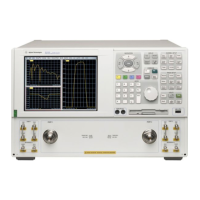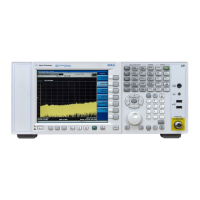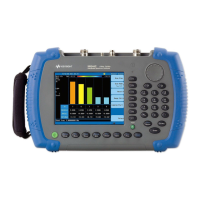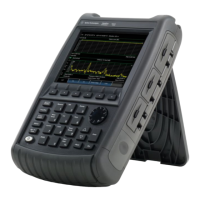224 Chapter 3
Mode
Distance To Fault
Mode
menu.
To help isolate faults over the length of interest, you can set a displayed distance less than
the measured distance. The displayed distance is set using the
Start Distance and the Stop
Distance
menu keys on the Freq/Dist/Calibrate menu.
Keep in mind that there are 256, 512, or 1024 measurement points across the measured
distance. The exact number of measurement points is set using the
FFT Size key on the
Meas Setup menu. Therefore, the measurement points across the chosen displayed distance
will be a ratio of displayed distance to measured distance times the number of points you
have specified. The higher the number of data points, the greater the measurement
resolution.
In most cases, the default resolution using 256 data points will be adequate to locate the
faults, but if more resolution is needed you can increase the span between the start and
stop frequencies (which will decrease the measured distance) or use the other approach,
automatic frequency range. If the measurement distance is not long enough for the cable
you are testing, reduce the span between the start and stop frequencies (which will
increase the measurement distance) or use automatic frequency range.
NOTE When testing cables attached to antennas, test signals are radiated
from the test antenna. Verify that the signal used for the test, and
therefore being radiated from the test antenna, cannot interfere with
other radiated signals from other antennas.
Start Freq
Use this key to specify the Start Frequency of your frequency range.
Mode Stimulus / Response
Dependencies /
Couplings
You cannot set the Start frequency equal to the Stop frequency.
The instrument will alter the value of the last setting to
maintain a minimum value of 1 kHz difference between the
Start and Stop frequencies.
Preset 1.85 GHz
State Saved Saved in instrument state.
Range From 10 MHz to 3.019999 GHz (Option 503) / 6.019999 GHz
(Option 506)
Key Path
FREQ/Channel, Start Freq
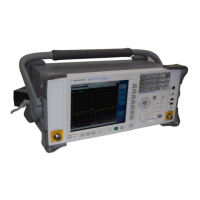
